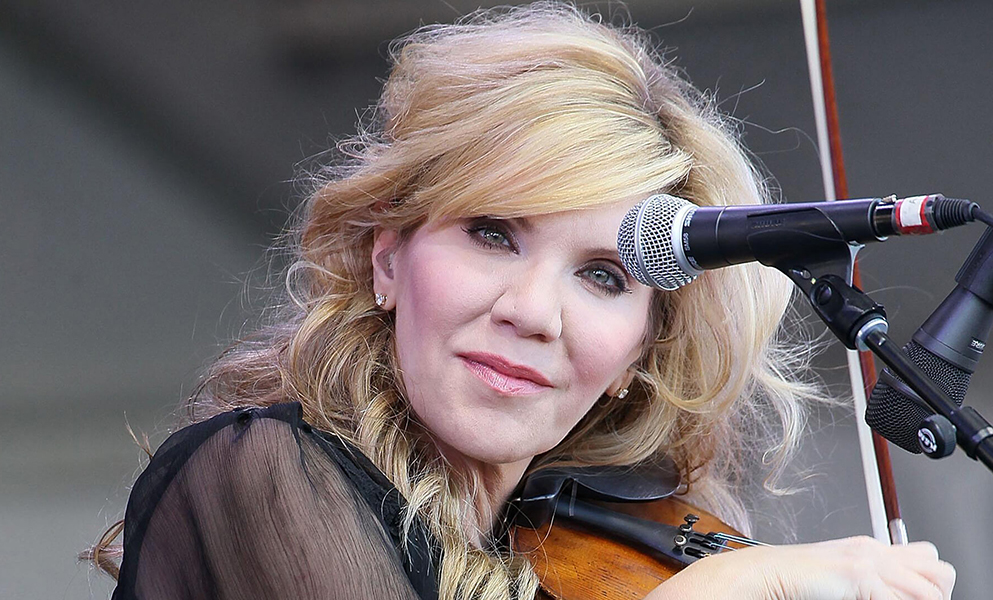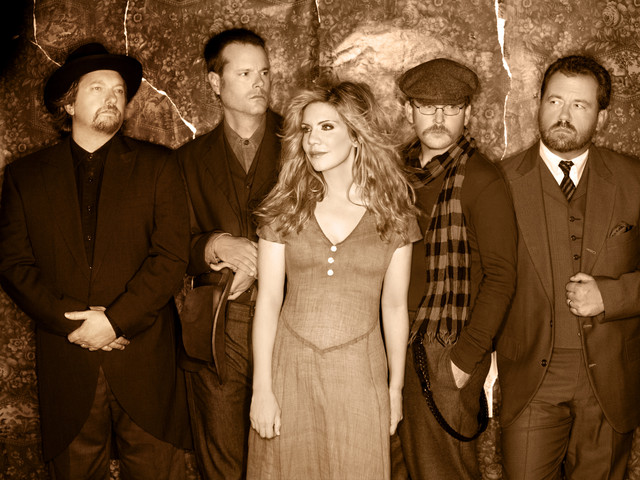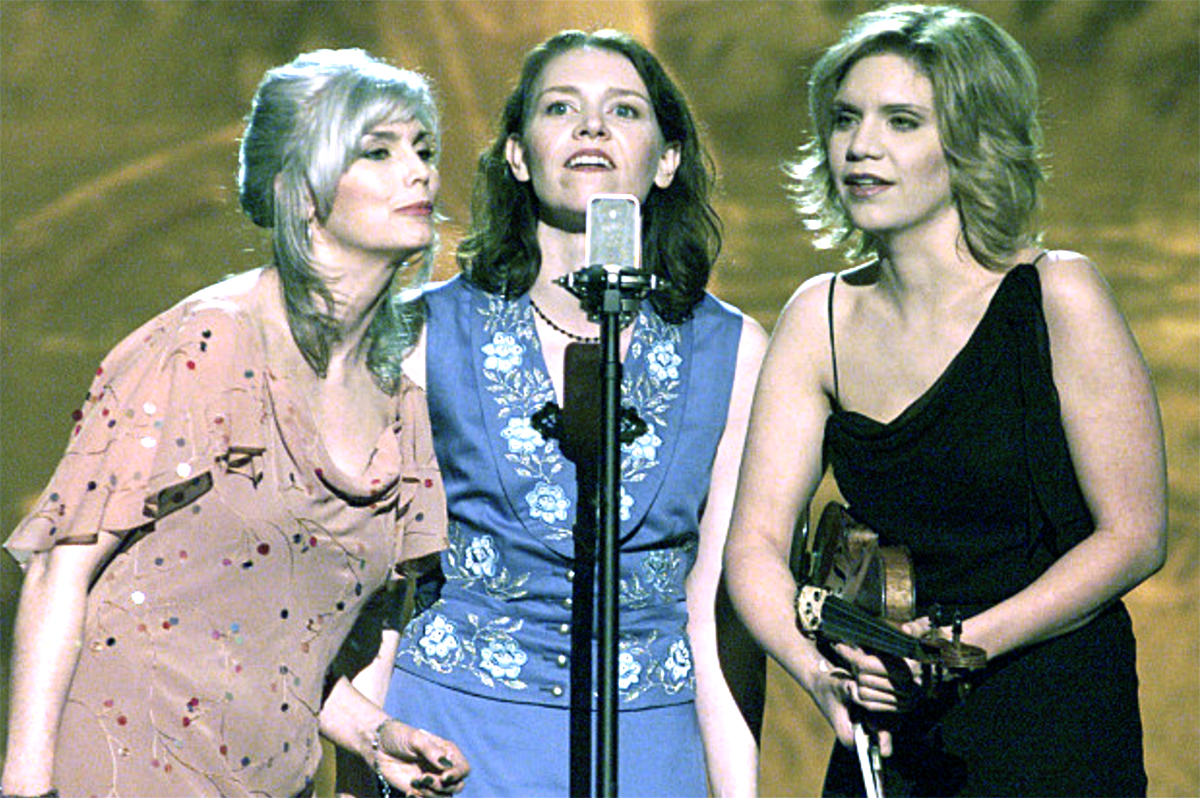Featured Stories
Alison Krauss and the Union Station: A Reunion Made in Bluegrass Heaven

Alison Krauss
“It’s Scottish bagpipes and old-time fiddling. It’s Methodist and Holiness and Baptist. It’s blues and jazz, and it has a high lonesome sound.” These are Bill Monroe’s comments about bluegrass music. Bluegrass as a genre can be dated back to 1939 when Bill Monroe and the Blue Grass Boys came of age with the budding new country sound coming out of the Grand Ole Opry. The gospel of this new music, with future legends, which included Earl Scruggs on banjo and flatpicking guitarist Lester Flatts, became an overnight national treasure when it was introduced on the nationally famous radio broadcast. However, the length of time Monroe and his kin had been serenading the good people of the Appalachian Mountains in Kentucky probably date back generations.
Thanks to the advent of radio, television, records, and all that came afterward, the genre has grown into a unique branch of the experience of great American music. “Someone asked me, how do you sing these tragic tunes? I have to. It’s a calling. I feel privileged to be a messenger of somebody else’s story. And I want to hear what happened.” Alison Krauss on her love for Bluegrass music. No single artist has done more to popularize bluegrass music with her sweetheart crossover appeal than Illinois native Alison Krauss. The release of the now classic 1995 best-of compilation record, I Can’t Let You Go, was her first album to earn double platinum status (representing two million copies sold). It includes songs with her long-time collaboration with the Union Station and the Cox Family as well as solo recordings. It effortlessly demonstrates how bluegrass—when done well—can provide the finest of covers of classic pop songs like the title track and the Lennon and McCartney classic, “I Will.”

Alison Krauss and Union Station
Krauss is now on a reunion tour with Union Station, following the release of their first album together in 14 years, Arcadia. This album is a welcome return to the roots of the music Krauss and Union Station have championed. It is noteworthy for the way it evokes the tragedies and forgotten soul of times past. Like The Band’s second album, these are inside tales that feel as though they could have been written in another century. This rings true with the Civil War ballad “Richmond on the James.” The notes and comments by Krauss provided on her website explain this: “There’s something about hearing a woman telling the story of a soldier. It reminds us how young they were—they were just kids and they had such passion and they were excited to go and to be of service and to be a hero and so innocent. There was no way to know what they were getting into. Even though the story is so dark, the innocence is so beautiful at the same time.”
It has been a long road between the blue grass hills of Rosine, Kentucky, where Bill Monroe was born and the technology-heavy instant-streaming age where Alison Krauss now continues climbing new artistic peaks. With a voice as clear as creek water that carries a unique affection for the high lonesome tradition of bluegrass, Alison Krauss comes from humble roots that are as unassuming as they are deeply planted. Her father, a psychologist turned real estate businessman, was an immigrant from Germany, who came through a childhood with World War 11 surrounding him. Her mother, Louise, a magazine illustrator, nurtured Alison’s interest in the arts, especially music. For both of Louise’s children, music was encouraged. Alison’s younger brother, Viktor, became an acoustic bass player, while at five years old she was assigned to the violin…. Classical violin became her obligatory childhood past time. But Krauss also loved pop music. While she studied the fundamentals, she learned new ways of playing violin. When she was eight years old, she found her way around the violin well enough to improvise. The discovery of Richard Greene’s New Grass fiddle album, Duets, and the bluegrass fiddle instruction book that changed her musical direction. She learned many of the songs from the album.
Over the next few years, she grew in her fiddle skills. When she was 13, she won the National Flat Picking Walnut Valley Festival Championship, based in Kansas, for her fiddle skills. The same year the Society for the Preservation of Bluegrass in America named her the “Most Promising Fiddler in the Midwest.” She was also singled out as a “virtuoso” by Vanity Fair magazine.[26] It was while she was playing these nationally known festivals where Krauss’ future would begin to unfold.

Emmylou Harris, Gillian Welch, and Krauss, singing “Down to the River to Pray” for the movie O Brother Where Art Thou.
Alison Krauss’ recording career began in 1986 when she was 15 years old. The initial session for Different Strokes, which credited to Jim Hoiles and Friends, Alison Krauss, and Swamp Weiss. Hoiles produced the album with help from the Krauss family. It is today a rare work of traditional bluegrass that includes Alison’s older brother, Viktor, on bass. Her first solo album, Too Late to Cry, was released after she was signed to the well-known independent record label Sugar Hill in 1987. The album came about after she had become a near-household name at national bluegrass festivals as a musical wunderkind. In 1983, when she was 12 years old, she began singing with bassist and songwriter, John Pennell in a band called Silver Rail. Pennell later changed the band’s name to Union Station when it was discovered that there was another band around named Silver Rail. She would eventually meet every member of Union Station at subsequent festivals. Pennell would contribute six of the 11 songs on Too Late to Cry. The Philadelphia Inquirer noted about the debut solo album, “Unlike most young fiddle players, who tend to be stiff and earnest, Krauss has a loose, jazzy swing to her playing.” But it was her voice which became an equal draw for audiences and critics alike suggested by this notice from the Washington Post, “Krauss’ piercing, country-bred soprano occasionally recalls Emmylou Harris at her best, and her fiddle breathes gales of life into tunes like “Dusty Miller.”
Krauss’ career would be multi-dimensional as she managed to hold a successful solo career, become the front artist for Union Station, and grow in demand for tribute and collaborative projects like the Down from the Mountain album, concert, tour, and film inspired by the soundtrack of the Coen brothers film, Oh Brother Where Art Thou. Since this time, Alison Krauss and the Union Station have won 27 Grammy Awards. She has also been inducted into the International Bluegrass Hall of Fame, in 2021. She has won multiple awards and honors in the bluegrass and country music genres. While Union Station has gone through multiple personnel changes the stellar members now include Russell Moore, Roy Block, Barry Bates, Jerry Douglas, and Larry Atamanuik.

Alison Krauss and Robert Plant
Just as the story seems to complete and Alison Krauss’s place as a popular music icon is assured, things take a turn to an unpredictable better. In 2004, Krauss was invited to participate in a tribute concert for the legendary folk singer, Leadbelly. During the show she connected with Led Zeppelin frontman and lead singer, Robert Plant. They became fast friends, sparked by a mutual interest in the American mountain music of Ralph Stanley.
The musical chemistry and kinship grew and blossomed in the duet album Raising Sand, released in 2007. It became a best-selling critical and audience success with the unlikely pairing, bringing out the best in each other. Rumors, of course, began to fly about some kind of romance between them. With 20 years of age difference a desire to make the best music possible for this unusual project, the two denied anything other than musical kinship.
The album, which includes engaging, subdued, and vibrant music with songs by Townes Van Zandt, Gene Clark, Tom Waits, and Doc Watson, managed to sweep the Grammys, winning Album of the Year and Record of the Year. It was Alison Krauss’ night to enjoy the love of the music industry and quite a payoff for a lifetime of taking artistic risks that proved abundantly successful. While Alison Krauss and Union Station have come together again after 14 years, it is a time to enjoy continued success and artistic achievement. And for the five-year-old girl who dreaded her mother’s insistence that she take up the violin, there must be something of a bittersweet feeing about the irony and unexpected joy that comes with the passion she found for bluegrass music. Somewhere in the stars today, Bill Monroe must be smiling down on us.
Alison Krauss and Union Station, Saturday, July 12, Rady Shell, jacobs Park, 222 Marina Park Way, 7pm.






